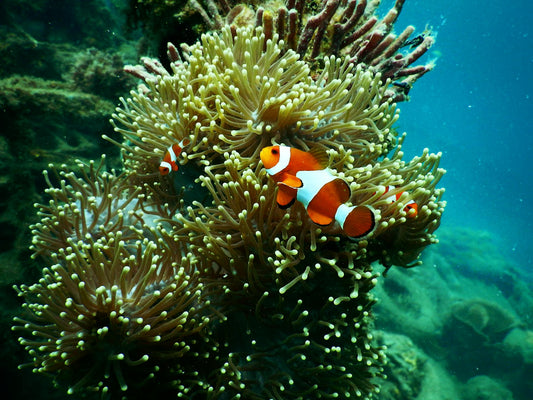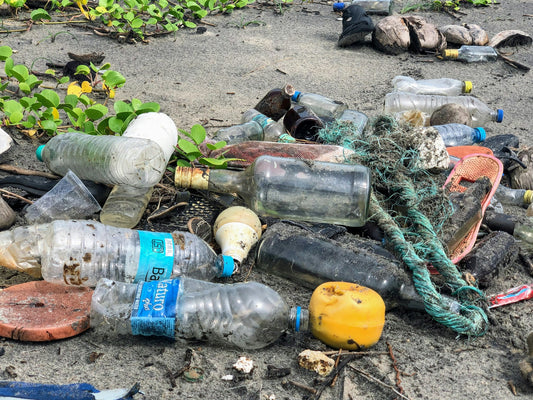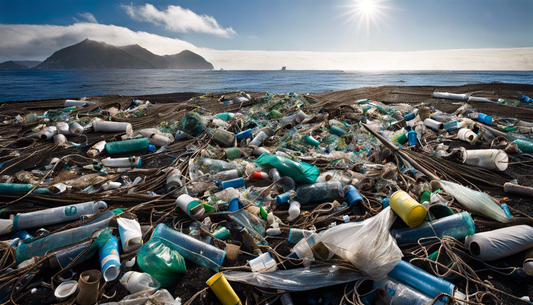Share
Picture a huge island made of garbage, which is as large as twice the state of Texas and is adrift in the middle of the Pacific Ocean.
This is the Great Pacific Garbage Patch (GPGP), a massive and increasing accumulation of marine waste, one of the most pressing environmental issues of the present age.
The GPGP is formed by the North Pacific Subtropical Gyre, a system of swirling ocean currents that traps debris in a seemingly endless vortex.
The majority of debris is comprised of plastics, including everything from large fishing nets to microscopic plastic particles that infiltrate the food chain.
In this article, we will discuss the history, effects, and present attempts to solve the Great Pacific Garbage Patch problem to raise awareness of what can be done to preserve our oceans for future generations.
How Was The Great Pacific Garbage Patch Discovered?

The Great Pacific Garbage Patch was first sighted in 1997 by Charles Moore, an oceanographer and a sailor by profession.
Moore observed a huge amount of plastic waste in the North Pacific Ocean on his way back to California after a sailing race in Hawaii.
This led to many studies and increased awareness of the effects of increased marine pollution.
The GPGP is situated in the North Pacific Subtropical Gyre, a vast body of water that consists of a system of circulating currents.
These currents include the California current, the North Equatorial current, the Kuroshio current, and the North Pacific current; they circulate clockwise, thereby forming a vortex that contains debris.
|
For Your Information: A gyre is a large system of circular ocean currents formed by global wind patterns and forces created by Earth's rotation. These currents create areas of convergence where debris, like plastics, accumulate. |
Technically, the GPGP is not a singular, compacted body but more of a scattered pile of plastics and other wastes with an area of about 1.6 million square kilometers (0.6 millio square miles).
The patch contains almost 1.8 trillion pieces of plastic, weighing approximately 80,000 metric tons.
Composition and Sources of Pollution in the Great Pacific Garbage Patch

The GPGP is not a solid mass but rather a dispersed area where high concentrations of floating debris are suspended.
The debris is deposited there because after it is moved by currents to the gyre, it stays in the middle, which is relatively less turbulent until it is reduced to smaller particles due to the effects of sun exposure and waves.
The GPGP is mainly constituted of plastic, which makes up to 94% of the total fragments of debris in the ocean.
It encompasses microplastics, which is plastic debris of size less than 5mm; macroplastics, which is plastic debris bigger than 20mm; and megaplastics, which are very big items such as fishing nets and buoys.
Microplastics are especially dangerous because they can be swallowed by small organisms in the seas, and thus enter the food chain and pose a threat to human health.
|
Read our section on microplastics for more information. |
Other than plastic, the GPGP has other classes of debris, including fishing-related gear such as nets, lines, and traps, which also constitute a good proportion of the mass.
This fishing gear constitutes more than 46% of the total mass of debris found in the patch and is very dangerous to the lives of marine animals since they get entangled and sometimes injured, like sea turtles, seals, and birds.
The debris comes from different sources. Some of the sources: Around 54% are linked to land-based businesses in North America and Asia, and 20% are linked to marine sources like fishing boats and oil platforms.
Lastly, some of the items recovered in the GPGP include plastic bottles and bags, computer monitors, LEGOs, and all sorts of products that may be shipped through the sea, which may be washed away by storms.
Environmental and Health Implications of the Great Pacific Garbage Patch

The GPGP has many environmental and health implications that can have severe impacts on marine life in the Pacific Ocean.
One thing that is to be mentioned is that plastic doesn’t only exist on the surface, but the whole water column is found to be polluted. Scientists have found plastic up to 2,000 meters (2,000 yards) deep.
One of the most concerning effects is the danger posed to sea life, which unfortunately consumes or gets trapped in plastics.
For instance, sea turtles mistake plastic bags for jellyfish, which is their primary source of food; the bags end up clogging their digestive systems and can be lethal.
According to studies, plastic accounts for roughly 74% of the diet of sea turtles that enter the area.
Likewise, seabirds such as the black-footed albatross feed plastic pieces to the chicks, leading to malnutrition or death from stomach blockages.
Microplastics are more dangerous as they can be easily swallowed by smaller organisms, including plankton and fish.
This ingestion brings toxic substances into the food chain and impacts all trophic levels (levels in the food chain), including the top consumers and, therefore, humans.
These plastics have a tendency to accumulate dangerous chemicals such as Polychlorinated Biphenyls (PCBs) and dioxins and then transfer them to the food chain, thus exacerbating the effects on marine life.
Furthermore, additives used in the production of plastics, such as bisphenol A (BPA) and phthalates, are considered endocrine disruptors.
These chemicals can disrupt the normal functioning of hormones, resulting in several health complications, such as reproductive disorders, developmental diseases, and high chances of developing cancer.
| Read more about how plastic poisons the body in our massive database of health effects caused by plastic. |
Are there any Cleanup Efforts in Process?
The process of clearing the Great Pacific Garbage Patch is a daunting task because of the size and also the spread of the debris.
Current methods of cleaning the ocean are ineffective as nets would entangle marine life and only deal with surface pollution.
According to the National Oceanic and Atmospheric Administration, it would take 67 ships one year to clean up the area, which is equivalent to less than one percent of the North Pacific Ocean.
However, new solutions are being put into practice. The Ocean Cleanup is a Foundation based in the Netherlands that has been working on this problem, it was created by Boyan Slat.
They have also come up with systems that harness the currents of the sea, thus helping to gather plastics in one place to be easily collected.
By June 2024, The Ocean Cleanup had deployed 100 extraction missions, and more than 15 million kilograms of plastic had been retrieved from the oceans.
What Should We Do to Preserve Our Oceans for Future Generations?
The Great Pacific Garbage Patch is one of the many proofs of the global issue of plastic pollution. To avoid further pollution of our oceans, it is necessary to take measures at different levels.
It is crucial that we as a society reduce or eliminate single use plastics, to limit the amount of plastics that enter the market. Only if we drastically reduce plastic production, other measures like cleanups and recycling can be successful.
Previous measures, such as the prohibition of plastic carry bags and the promotion of reusable carry bags, have had positive effects.
Governments, therefore, need to coordinate themselves to enforce such regulations and provide support for large-scale cleanup and prevention measures.
By applying these strategies, progressive strides can be made toward reducing plastic pollution and preserving the marine ecosystem for the future.
We hope you enjoyed this article. If you want to read more like this, make sure to check out our Blog and follow us on Instagram. If you are interested in truly sustainable products, check out our Shop.
When did you first learn about the GPGP? Leave a comment below and engage in the discussion!








